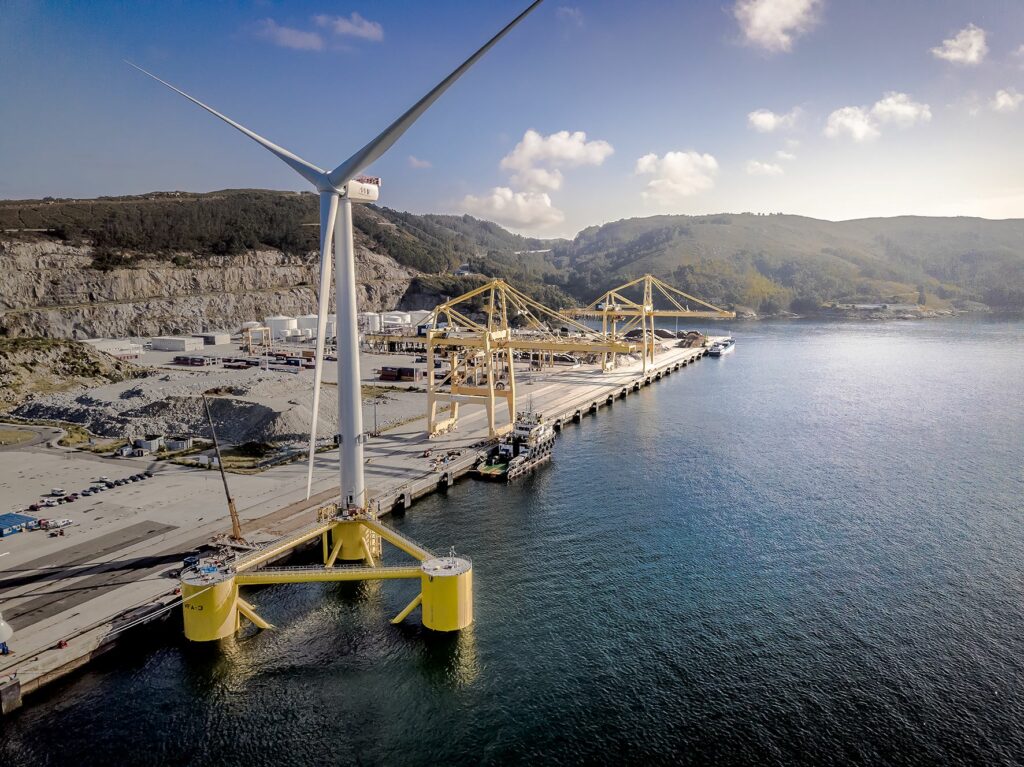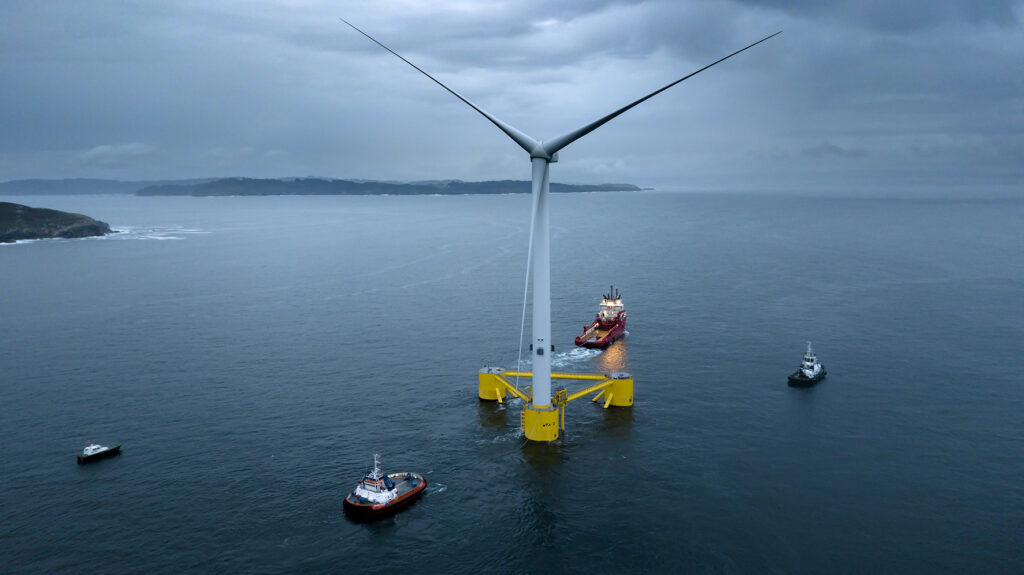Floating Wind: Between the Breakwater and the Breakthrough
There’s a curious quiet running through the floating wind sector right now. Not the quiet of retreat, though a few have stepped back, but the stillness of a complex machine held in pause, waiting for something downstream to move. Whilst there are a number of challenges, one that is being struggled with is ports.
At first glance, floating offshore wind has enjoyed a fair wind. A 170GW+ pipeline in Europe*. New policy tools in the UK and EU. High-profile CfD wins and industrial-scale ambitions. But look closer, and the gaps start to show. Few final investment decisions. Fewer OEM commitments. And ports, critical to the entire value chain, locked in a holding pattern with developers, regulators, and financiers each waiting for someone else to blink first.
A Sector Yet to Unlock Scale
Our engagement with the sector, confirmed from the recent Westwood report are unambiguous: has told us that developer confidence is down. Fewer than 3GW of floating wind is expected online by 2030, down from the heady, OilCo fuelled days of yesterday. Strike prices are tight of not unrealistic, margins are tighter, and the bankability gap is widening. Most worrying of all, Western WTG OEMs are stepping back. Without scalable, certified solutions and predictable investment returns, the sector risks drifting from industrial promise to speculative niche.
Why? Because floating wind is different – not just technically, but operationally and geographically. The resource may lie far offshore, but the solution begins onshore.

Port Readiness: The Real Bottleneck
Every conversation I’ve had in recent months — whether with developers, OEMs, or policymakers — inevitably returns to ports. Port infrastructure is the non-negotiable enabler of floating wind scale. It is where design meets steel, and where schedule meets logistics.
And yet, despite port masterplans stacking up across the UK, France, and elsewhere, the investment case very often remains paralysed. Developers won’t commit capex without certainty of capacity. Ports won’t commit capacity without developer investment. Regulatory support is slow…at best stop and start, funding mechanisms underdeveloped, and technical standardisation absent.
The result? A deadlock that strangles the sector before it leaves the quay.
This is where nuance matters. Port investment for floating wind isn’t simply a case of more space. It’s about the right space, in the right locations, with the right flexibility. We need a redefinition of readiness:
Geotechnical diversity: Ports must unfortunately handle vastly different floating foundation types – semi-subs, spars, tension legs – with variation in size, draft, and lift requirements.
Multi-use modularity: Sites must be able to pivot between assembly, integration, and O&M, not simply act as linear logistics platforms.
Temporal elasticity: Capacity needs must match not just the volume of projects, but the phasing… peaks, troughs, and clustering effects across geographies.
Contractual realism: Ports need long-term throughput confidence to underwrite investment. Developers need flexibility to accommodate evolving supply chains.
These are not trivial considerations. They go beyond engineering and into capital markets, policy design, and procurement reform. As the recent ReNews floating report rightly highlights, this is a sector-level coordination challenge. And unless we solve it, fast, we’ll be importing not just WTGs, but industrial value.

A Blueprint for Action
If we want to secure floating wind as a meaningful industrial sector – not a slow-burning innovation sideshow – then three things must now happen:
- Developers must lead demand signal clarity. Vague capacity ambitions and flexible timelines won’t unlock port investment; not every port will have investors like Quantum Energy Partners, who broke ground at Ardersier Port without any contracts in place. Early-stage contracting, even if conditional or modular, is vital to de-risk planning decisions and this, as often as it does demands consenting timeline confidence and consistency (the 3 Cs!).
- Govts must rethink infrastructure economics. Risk-sharing mechanisms, co-investment models, and strategic hubs need to be accelerated…not just studied with reports, though we enjoy authoring them! Port integration must be seen as critical energy infrastructure. Ports open up the door for proximity supply chains, no ports and that supply chain will follow.
- European OEMs must return to the table. Floating wind can’t succeed with one foot out the door. Selective engagement is no longer sufficient. If the market is to be made, it must be shaped collaboratively. If European OEMs continue to ignore this sector, they will be inviting Chinese OEMs to establish a foothold in their backyard. Calling for market protection gets a bit hollow when they are also ignoring part of it.
Floating Wind’s Real Frontier
What’s clear from the current stalemate is that floating wind’s challenges are not technological in the narrow sense. The hardware works. The resource is known. The ambition is ample. Without devaluing the technical challenges, in my mind the the issue is systemic.
This is a sector contending not with a lack of innovation, but a lack of cohesion; across timelines, across geographies, and across industrial actors. The next stage in floating wind’s evolution won’t be marked by another prototype or design tweak, but by infrastructure converging with investment logic, and industrial readiness overtaking aspirational rhetoric.
Ports sit at the centre of that convergence. They are not merely offshore and marine logistic hubs, but mirrors of the sector’s maturity. If they remain idle, it is not because floating wind has failed…but because the industry has yet to prove it is serious about delivery.
And so in this sense, the real frontier for floating wind isn’t offshore. It’s onshore. It’s in our readiness to coordinate, invest, and commit. Whether that happens in time is the question still hanging in the balance.
The Role of Technical Advisors
This is where we, at OWC and the wider ABL Group, come in. As Technical Advisor of the Year, our job is to help projects cross the line between idea and investment …not just through engineering, but through strategic realism.
We work across the lifecycle – from early feasibility and supply chain due diligence, to port feasibility, metocean design, and logistics risk management. Our teams in France, the UK, Korea, Norway, and beyond are already supporting the shaping of port clusters and integration strategies that will define whether floating wind moves from plan to steel.
I’ll be discussing these issues further at Seanergy in Paris, where I’ll be joining the panel on Harbouring the Future: How to Craft the Ideal Marine Renewables Port. My view is clear: ports are not passive enablers. They are strategic actors. And without them, floating wind cannot – and will not – scale.
We are not short of ambition in floating wind. But if we want to build an industry, we need to ground that ambition in deliverable infrastructure, credible business models, and executable design.
Ports are the place to start. Let’s get to work.
*Source: GWEC

John MacAskill
Group Growth Director, ABL Group

